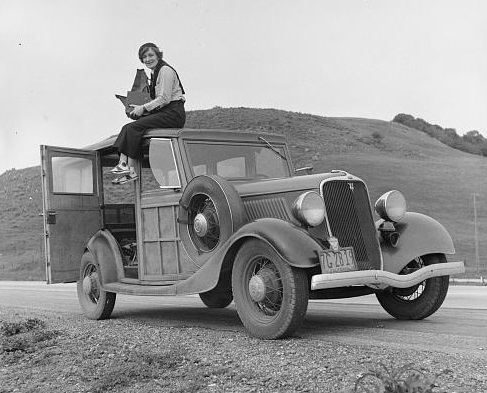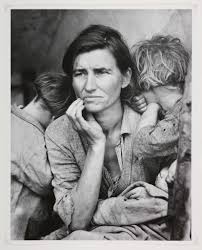
Dorothea Nutzhorn is born on May 26, 1895 in Hoboken, New Jersey to Heinrich Nutzhorn, a lawyer, and Johanna Lange Nutzhorn. At age seven, Dorothea contracts polio, which leaves her with a limp. This incident has a deep impact on her life: it “helped me and humiliated me,” she says. Her parents divorce when she is young, and, blaming her father, she eventually drops his last name and takes her mother’s name, Lange.
Lange studies photography at Columbia University and with several professional photographers in New York City. In 1918, she sets out with a friend to travel the country and ends up staying in San Francisco, where she opens a portrait studio, photographing society’s elites. She marries painter Maynard Dixon in 1920.

In 1933, during the Great Depression, migrant farm workers from Oklahoma and other parts of the Midwest come to California to escape the dust storms and find work. From her studio window, Lange photographs the “Okies” and others who have lost their jobs. She begins photographing her subjects on the streets and in the bread lines, and so begins her work as a photojournalist, which leads to a job with the Farm Security Administration, documenting the hardships faced by rural people displaced by drought, flood and economic conditions.
In 1935 she divorces Dixon to marry UC Berkeley professor and economist Paul Taylor. They spend the next four years working on their book An American Exodus: A Record of Human Erosion, documenting the lives of migrants, sharecroppers and tenant farmers.
Lange’s most famous work is “Migrant Mother,” a photo taken in a pea pickers’ camp in Nipomo, in San Luis Obispo County. It is considered one of the most influential photos in American photography.


